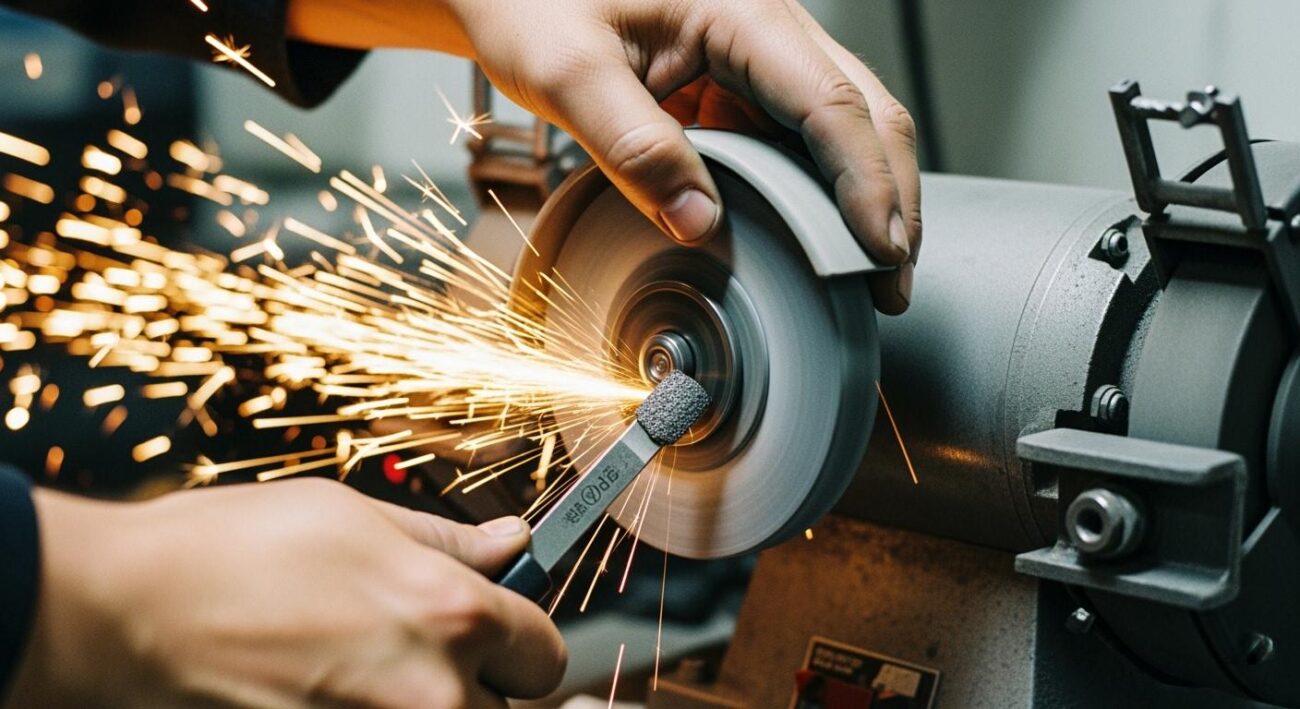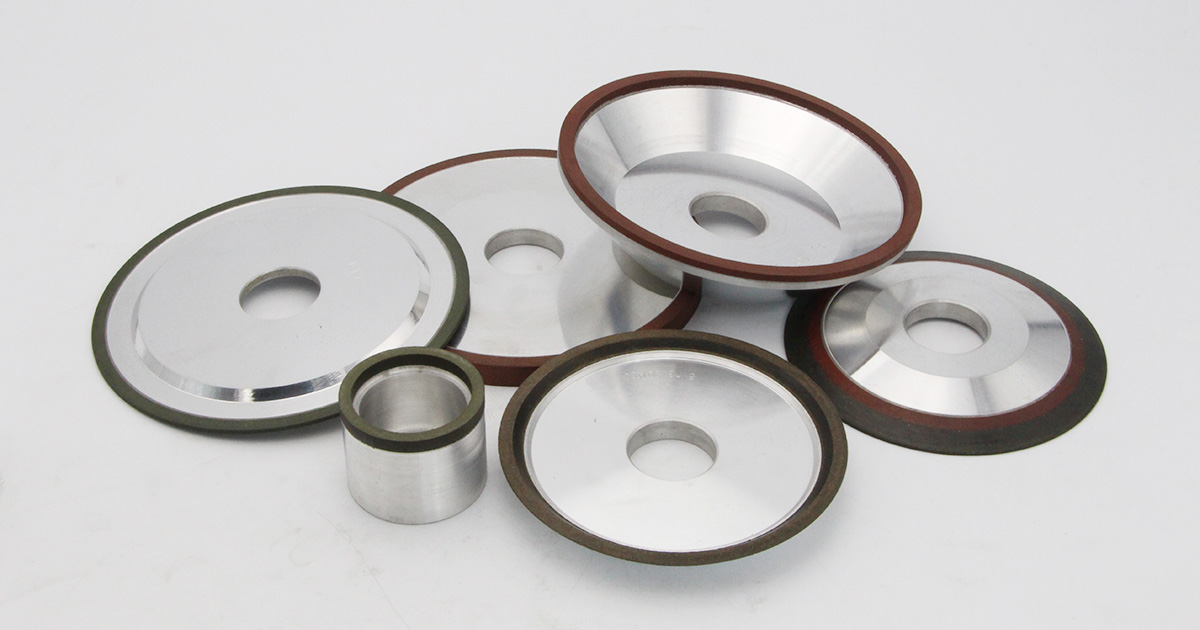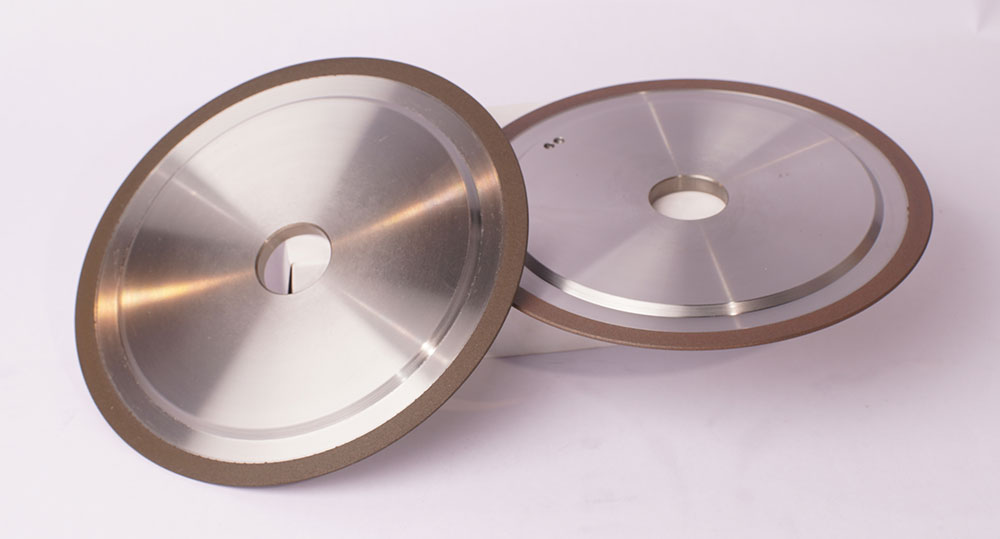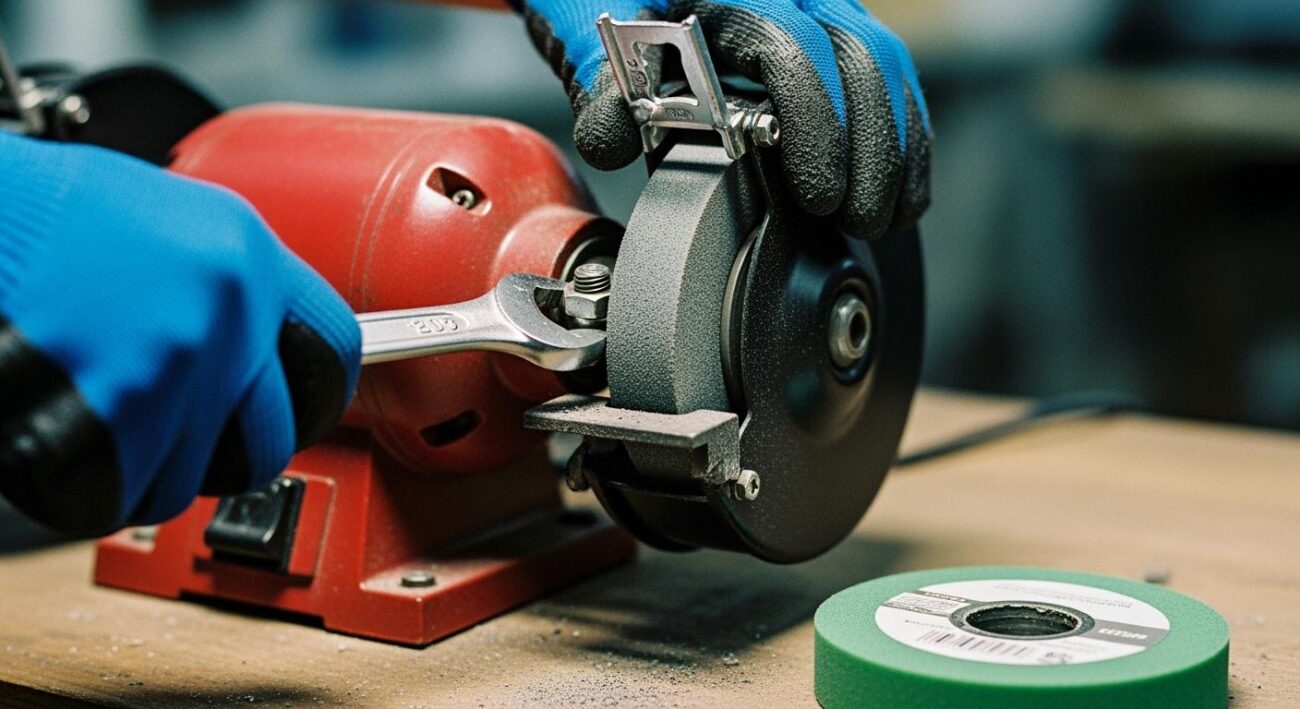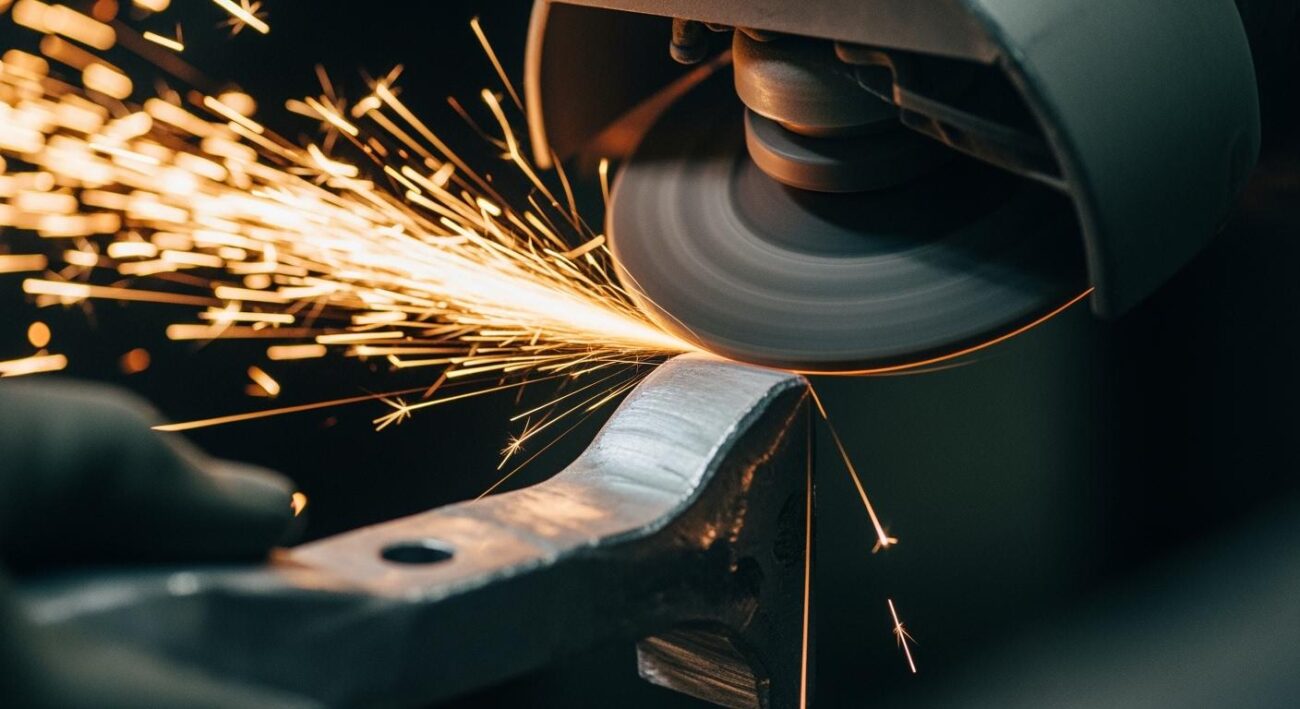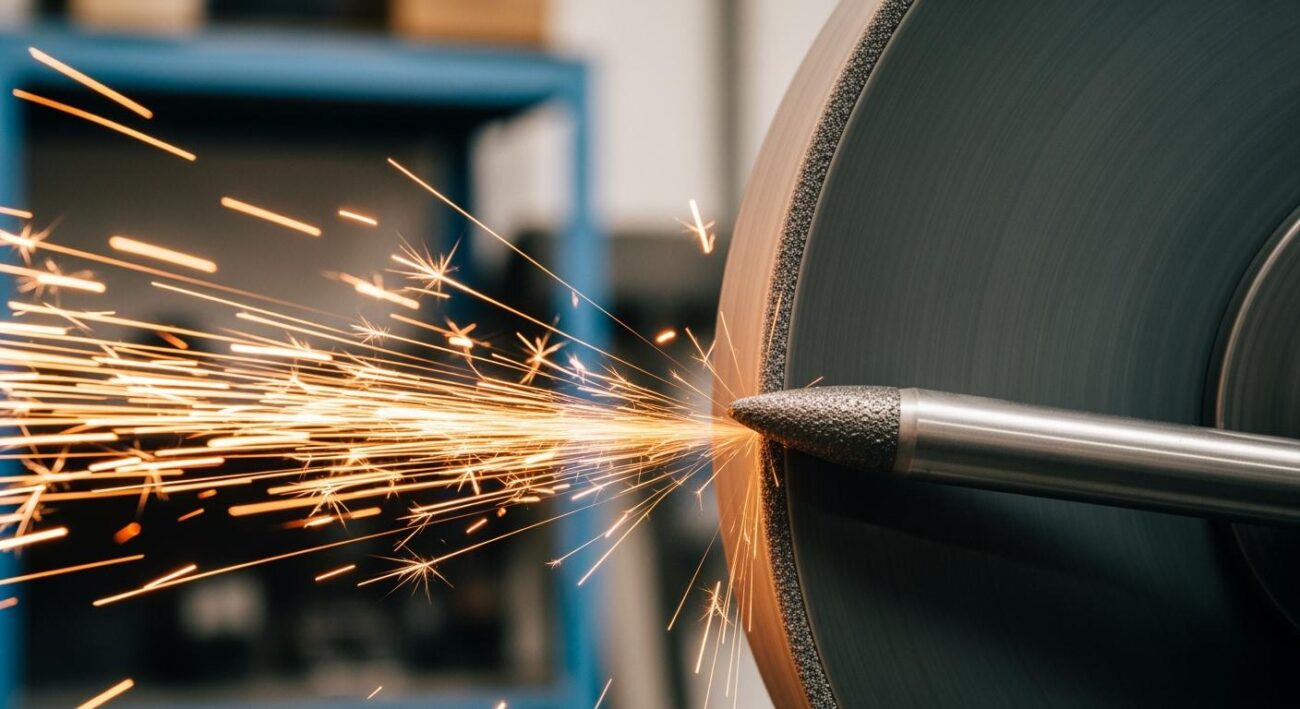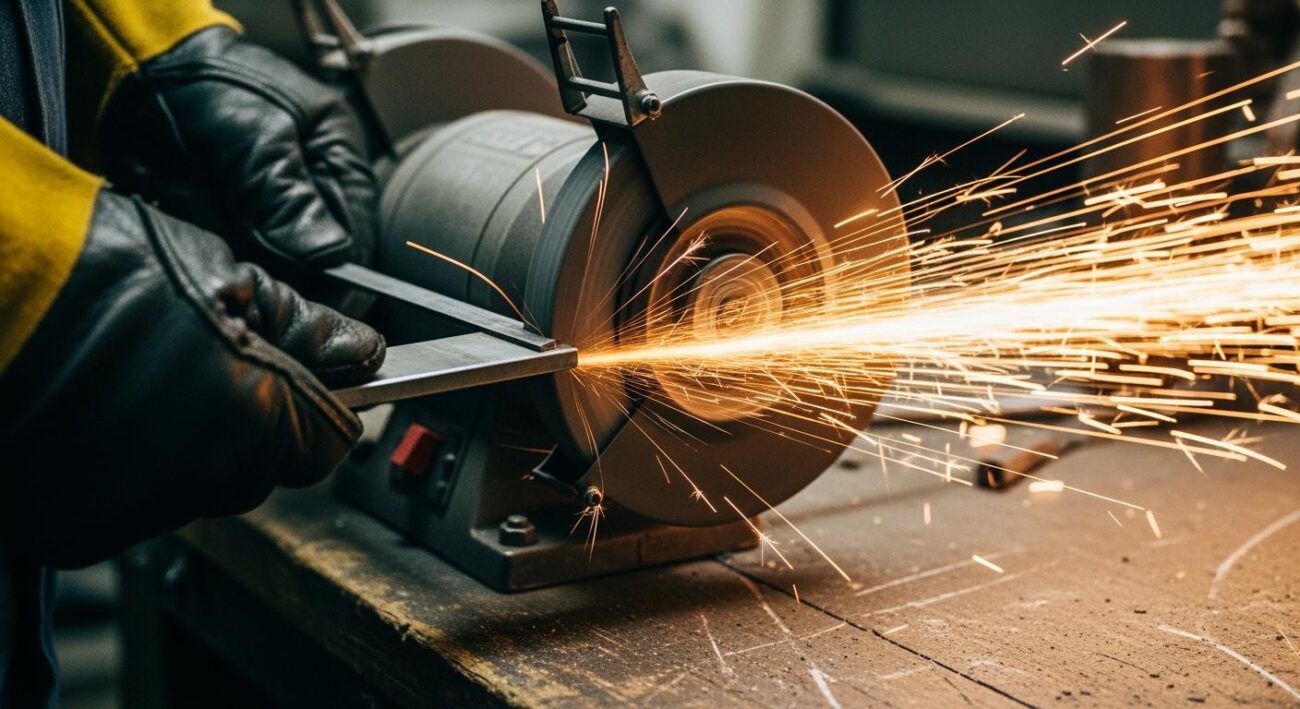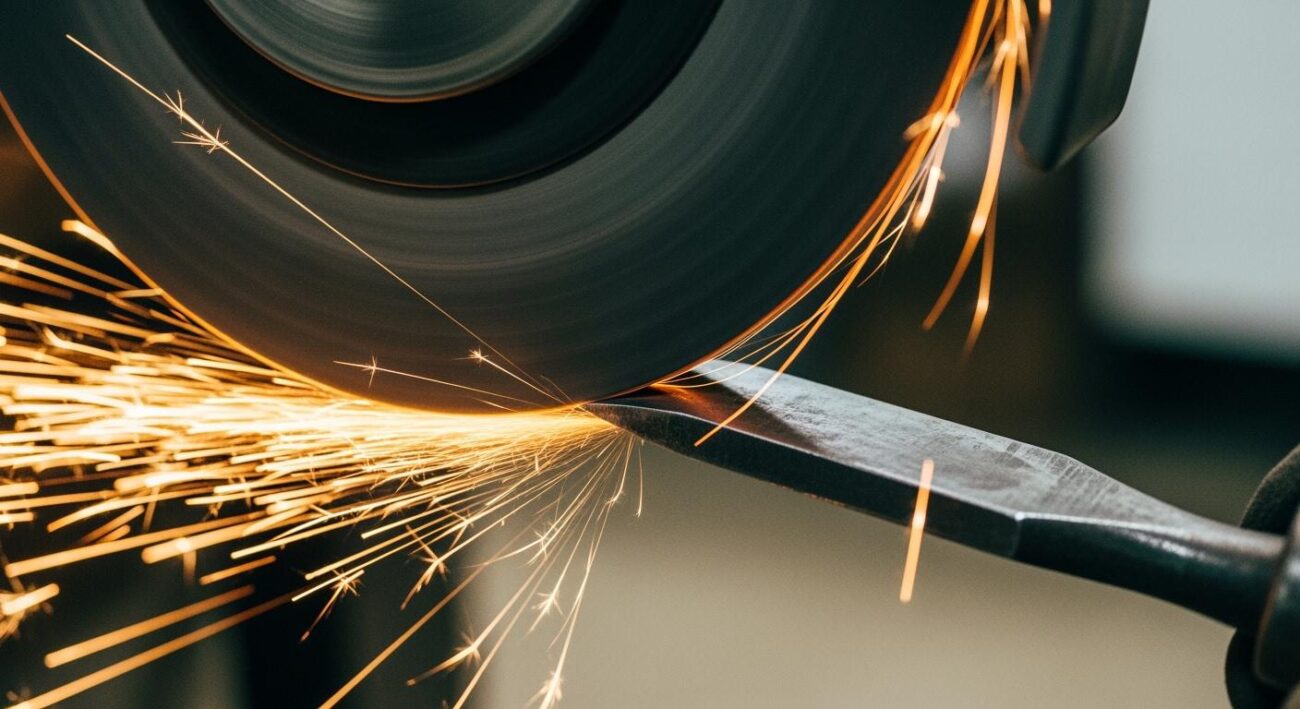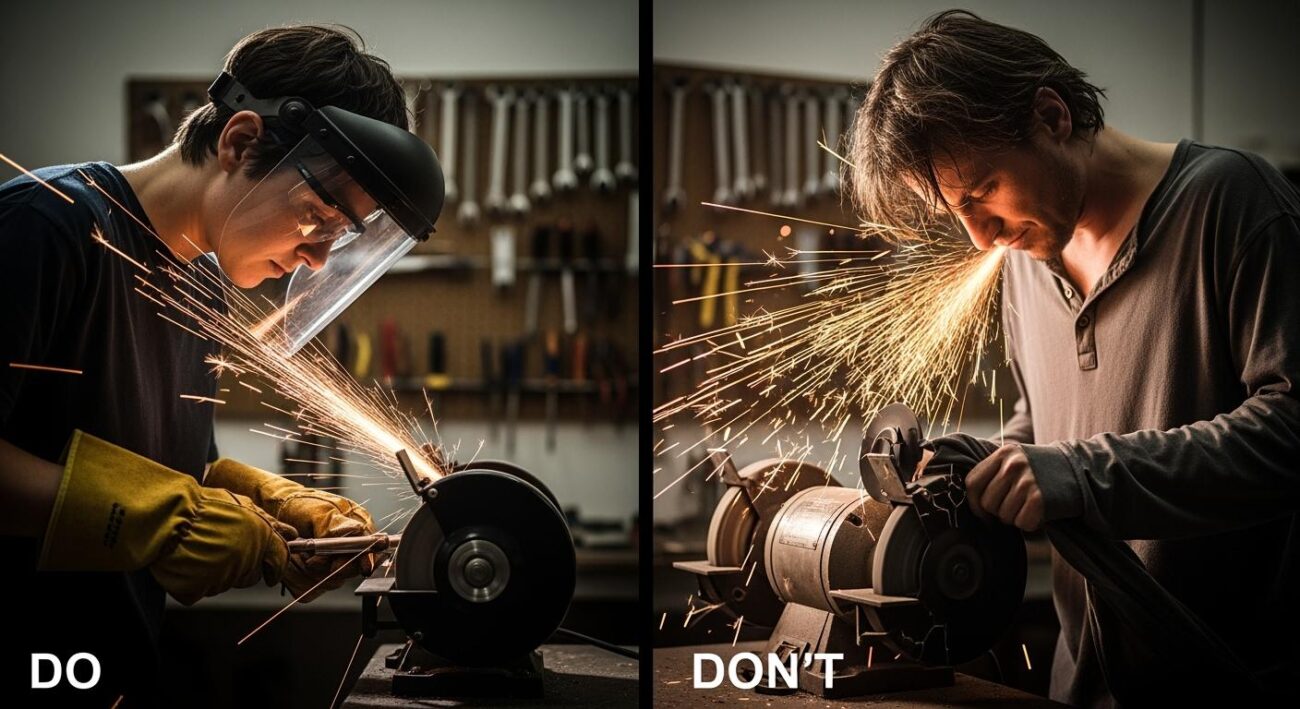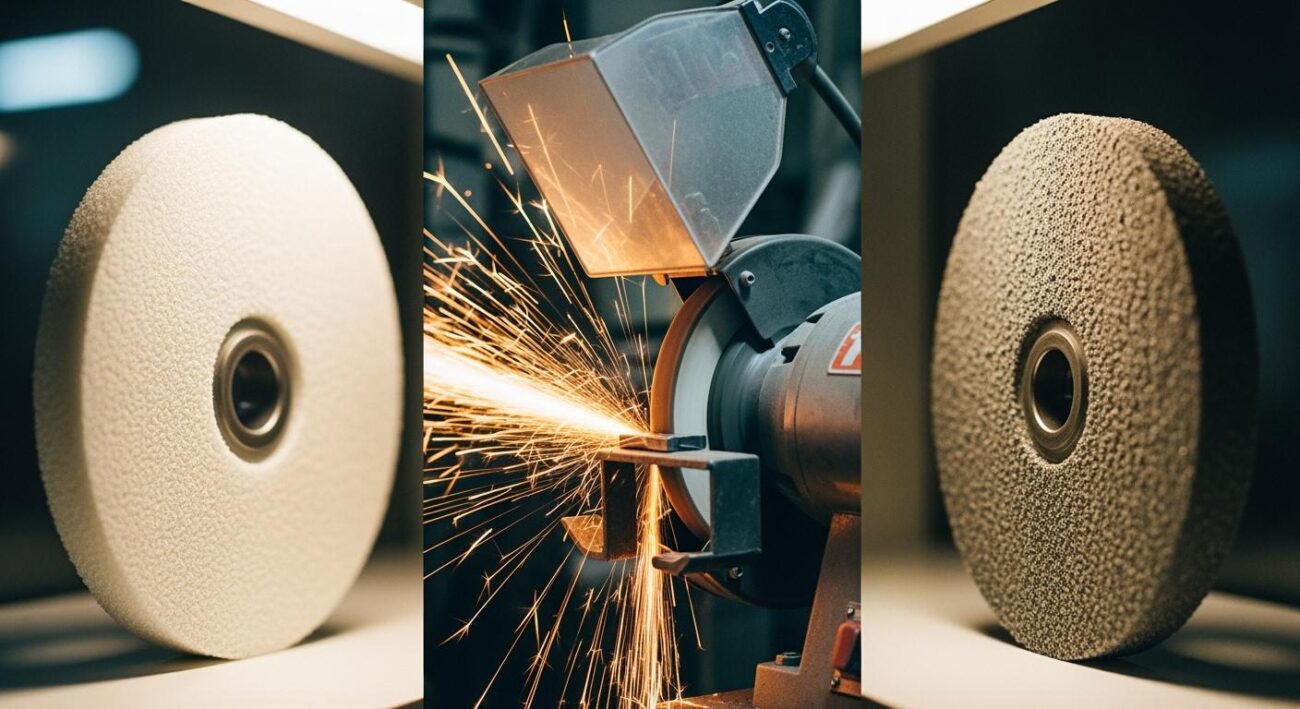You should know that a common grinding wheel does have an expiration date. This rule is a critical safety standard. These expiration dates apply to organic bonded wheels, like those made with resin. This type of wheel has a limited shelf life. The typical expiration is two to three years from the wheel manufacturing date. This expiration date is important. Ignoring the wheel expiration can be unsafe. A wheel’s life is finite.
Note: Always check the expiration before using any wheel.
Key Takeaways
- Grinding wheels made with resin have an expiration date, usually two to three years from when they were made. This date is important for safety.
- The resin in these wheels can get weak over time, especially from moisture. This makes the wheel unsafe to use.
- Always check the expiration date on your grinding wheel. If the date is missing or unreadable, do not use the wheel.
- Using an expired grinding wheel is dangerous. It can break apart and cause serious injury.
- Store your grinding wheels in a dry place. Keep them away from extreme heat or cold to help them last longer.
Why Grinding Wheels Expire
You might wonder why a seemingly solid tool like a grinding wheel would have an expiration date. The answer lies in the chemistry of the wheel itself. The expiration is a crucial safety measure tied directly to the materials used to build the wheel. For many common cut-off and grinding wheels, the clock starts ticking the moment they are made.
The Degradation of Resin Bonds
The most common wheels with an expiration date are organic bonded wheels. This group includes resin, rubber, and shellac types. The organic resin acts like a glue, holding the abrasive grains together. Over time, this bond degrades. The primary cause of this breakdown is moisture.
Your workshop’s environment plays a big role. The resin bond naturally absorbs moisture from the air, which slowly weakens its structure. This process has serious consequences for the wheel.
- Moisture absorption directly weakens the bond holding the wheel together.
- This reduces the wheel’s structural integrity and hardness.
- A weakened bond lowers the disc’s cutting efficiency and compromises its safety.
This degradation isn’t just a theory; it’s a measurable process. Scientific studies on bond strength show a significant decline over a typical shelf life. The data reveals how quickly a wheel can lose its structural integrity, making the expiration a critical safety marker.
| Time Period | Mean Bond Strength (MPa) |
|---|---|
| New (Control) | 28.3 |
| 1 to 2 years | 15.2 |
| 2 to 3 years | 9.1 |
As you can see, the strength can drop by more than 65% within the standard shelf life. Using a cut-off wheel past its expiration date means you are using a tool that has lost most of its original strength. This is why respecting the expiration is non-negotiable for your safety.
For specialized tools, this rule is even more important. High-performance products like Aimgrind’s resin bond grinding wheels are engineered for tough materials like stainless steel and titanium. Adhering to the expiration date ensures you get the peak performance and safety that Aimgrind is known for. A fresh wheel provides the intended cutting life and structural soundness, while an old cut-off wheel simply cannot. The expiration guarantees the wheel performs as designed. The short life span of a cut-off wheel is a feature of its design for safety.
The Exception: Vitrified Wheels
Not all wheels share the same fate. Vitrified bond wheels are the main exception to the expiration rule. These wheels do not have an expiration date.
A vitrified bond is essentially a type of glass (ceramic) that is fired at high temperatures to fuse the abrasive grains together. This inorganic bond is extremely hard, strong, and stable. It is not affected by moisture, humidity, or age in the same way organic resins are. Therefore, it has an indefinite shelf life.
Vitrified wheels are preferred for different jobs than resinoid wheels. You will find them used in applications that demand extreme precision and rigidity.
| Bond Type | Primary Applications |
|---|---|
| Vitrified Bond | Heavy-duty, high-precision grinding |
| Resinoid Bond | Precision grinding, finishing, and cut-off tasks |
These wheels are ideal for:
- Precision grinding of very hard materials like ceramics and tungsten carbide.
- Tasks in the automotive and aerospace industries, such as camshaft grinding.
- Manufacturing high-precision components where maintaining tight tolerances is critical.
Note: Even though vitrified wheels don’t have an expiration, you must still store them correctly. Improper handling can cause damage that makes any wheel unsafe. Always store your wheels in a dry area away from extreme temperatures and never stack them directly on top of each other. Proper storage protects the wheel for its entire life.
Finding the Expiration Date
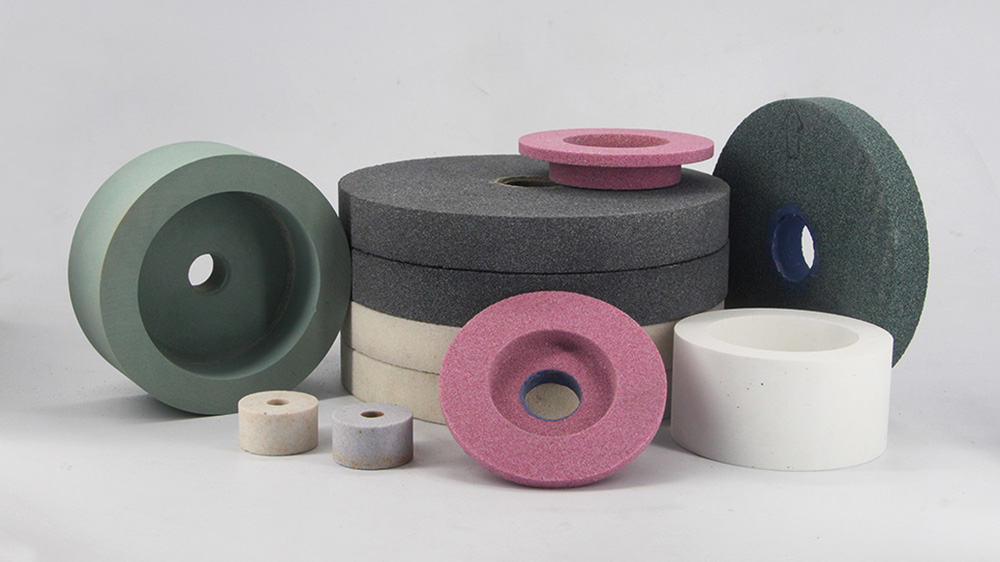
Knowing a wheel has an expiration date is the first step. You must now find that date. Manufacturers make this process straightforward for your safety. The expiration is a key part of using any cut-off and grinding wheels correctly. Checking the expiration date is a simple but vital habit.
Locating the Date Stamp
You can usually find the expiration date printed directly on the wheel’s label or blotter. Manufacturers often display the month and expiration year, such as 03/2027. This date marks the end of the wheel’s intended shelf life. The expiration confirms the wheel is safe to use. A cut-off wheel has a limited life span.
Sometimes, the manufacturing date is printed instead of the expiration date. You can calculate the expiration by adding three years to this date. For a cut-off wheel, this three-year life is standard. If you have trouble finding the date, you can try these steps:
- Check the strengthening ring on the cut-off wheel where the spindle sits. Many manufacturers stamp the date there.
- If you still cannot find a date, you should contact the supplier for help.
Finding the expiration is your responsibility. A quick check ensures the wheel is within its safe operating life. This simple action protects you from the dangers of a failed wheel.
When the Date is Missing
What should you do if a wheel has no date? Or what if the date is smudged and unreadable? The rule is simple and strict. You must not use the wheel. An unknown expiration means an unknown risk. The expiration dates are there for a reason.
If the identification label is missing or illegible, the wheel’s specifications and safety ratings are unknown—do not use it.
Using a grinding wheel without a clear expiration date is a gamble. You cannot know its age or condition. The bond could be weak, making the wheel a serious hazard. Always choose a different wheel with a clear expiration. Your safety is more important than finishing a job with a questionable cut-off tool. Discard any wheels with a missing or unreadable expiration date immediately. This practice is essential for a safe work environment.
Dangers of an Expired Grinding Wheel
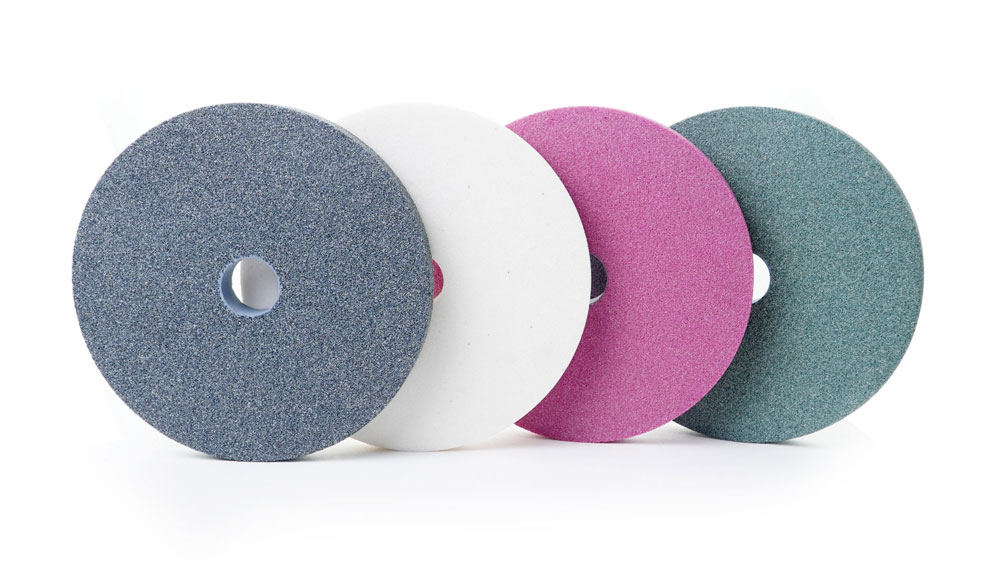
You now know how to find the expiration date on a wheel. Understanding the dangers of ignoring that date is the next critical step for your safety. Using an expired wheel is not a minor risk; it is a serious gamble with your well-being and the quality of your work. The expiration is a final deadline for the tool’s usable life.
Risk of Wheel Explosion
The single greatest danger of an expired grinding wheel is a catastrophic explosion. When a wheel fails at high RPMs, it does not simply crack. It disintegrates violently, sending sharp fragments flying in all directions. The physics behind this failure explains why it is so hazardous.
A spinning wheel stores a tremendous amount of kinetic energy. For example, a standard wheel rotating at thousands of RPMs can hold the same energy as a brick dropped from a 75-meter building. When the wheel shatters, all that energy is released instantly. Basic physics dictates that fragments will fly off at the wheel’s surface speed, turning them into high-velocity projectiles.
Several factors related to an expired wheel contribute to this risk:
- Degraded Bonds: As discussed, the resin bonds in an expired cut-off wheel weaken over time due to moisture. This compromised structure cannot withstand the immense centrifugal forces of high-speed rotation.
- Microfractures: Improper storage or minor impacts can create tiny, invisible cracks in a wheel. An expired wheel is more susceptible to these fractures expanding and causing a complete failure under stress.
- Heat and Expansion: Grinding generates intense heat. A weakened wheel is less able to manage this thermal stress, which can cause it to shatter.
The statistics are sobering. Angle grinders rank as one of the most dangerous power tools, with over 5,400 injuries recorded annually in some studies. The vast majority of these incidents are caused by the shattering of the abrasive wheel. Ignoring the expiration date on cut-off wheels and grinding wheels directly increases your risk of becoming part of this statistic.
Poor Performance and Damage
You might think that if a wheel looks fine, it will perform fine. This is a dangerous assumption. An expired cut-off wheel may seem to cut effectively at first. However, this performance hides a much higher risk of failure. The wheel’s structural integrity is compromised, even if it still removes material. You trade a small amount of convenience for a huge risk to your safety. The expiration date is your best guide to a wheel’s internal condition.
Beyond the immediate safety hazard, using a degraded wheel can also ruin your workpiece. A wheel that is past its shelf life can cause numerous surface defects. The weakened bond holding the abrasive grains can lead to poor results.
Common issues include:
- Scratching and Feed Lines: When the bond is weak, abrasive grains can break away unevenly. These loose particles get caught between the wheel and your workpiece, causing deep scratches and spiral marks.
- Wheel Loading: The pores of an old wheel can become clogged with metal particles. This “loading” reduces cutting efficiency and creates excess heat, which can burn or warp your material.
- Poor Finish: A degraded cut-off and grinding wheels will not hold its shape or cutting edge properly. This results in an uneven, unprofessional finish that requires you to rework the piece, wasting time and materials.
Ultimately, respecting the expiration date protects both you and your work. A fresh wheel provides the performance and safety you need to do the job right. The short life of a cut-off is a built-in feature to ensure your protection. Always check the expiration before you start a cut-off.
Proper Storage for Grinding Wheels
Proper storage is just as important as checking the expiration date. How you store your grinding wheels directly impacts their structural integrity, performance, and overall life. Following best practices for storage ensures each wheel is safe and ready to use when you need it.
Ideal Environmental Conditions
You must protect your wheels from the environment. The ideal storage conditions involve a dry, climate-controlled area that is shielded from extreme temperature swings and direct sunlight. Exposure to moisture is the primary enemy of an organic bonded wheel, as it weakens the resin that holds the abrasive grains together.
For organic bonded wheels, the recommended temperature is between 60°F-80°F with a relative humidity of around 45-50%.
Maintaining these ideal storage conditions prevents the bond from becoming too soft from moisture or too brittle from dryness. The following table provides a quick guide for various abrasives.
| Abrasive Type | How to Store | Environmental Target |
|---|---|---|
| Bonded Wheels | Racks/Separators | Dry, avoid temperature swings |
| Sanding Discs | Flat, unweighted | 60–80°F, 35–50% RH |
| Flap Discs | Flat | 60–80°F, 35–50% RH |
Following these recommendations for ideal storage conditions helps maximize the useful life of the wheel.
Correct Stacking and Handling
Physical handling and storage methods are critical for safety. You should always handle every wheel carefully to prevent dropping or bumping it. A small, unseen crack can lead to a catastrophic failure at high speeds.
Here are some key storage rules to follow:
- Store Thin Wheels Flat: Always lay thin, organic bonded cut-off wheels flat on a rigid, horizontal surface like a steel shelf. This prevents warping.
- Use Proper Racks: Never stack wheels directly on top of each other. Use storage racks with partitions to keep them separated and supported. Larger wheels should rest in padded, two-point cradle supports to prevent them from rolling.
- Avoid Concrete Floors: Do not store any wheel directly on a concrete floor, which can transfer moisture. Use pallets or shelves to keep them elevated.
These storage practices are not just suggestions; they are essential rules. A properly stored wheel is a safer wheel.
Yes, your grinding wheel has an expiration date. Using a cut-off wheel past its expiration is a serious safety risk. The wheel has a limited shelf life and life span. Always remember these key safety recommendations. Check the expiration date on every cut-off wheel. Inspect the wheel for damage before every cut-off. Store all wheels correctly to preserve their life. Your safety depends on these simple safety checks. The expiration date is a final deadline for a cut-off wheel. Respect the expiration.
Make checking the expiration date a mandatory part of your pre-use cut-off routine. A valid expiration confirms the wheel is ready for the cut-off.
FAQ
Why do only some wheels expire?
Organic bonded wheels, like resin types, expire because their bonds absorb moisture. This weakens the wheel over time. Vitrified wheels use a glass-like bond. This bond is waterproof and does not degrade, so it has no expiration date.
Can I use a wheel if it looks brand new but is expired?
You should never use an expired wheel, even if it looks perfect. The internal bond is likely weak and cannot handle high speeds safely. The risk of the wheel shattering is too high. Always prioritize your safety over convenience.
What should I do with an expired grinding wheel?
You must safely dispose of any expired wheel. Break the wheel into several pieces to prevent someone else from accidentally using it. Follow your local waste disposal recommendations for proper handling. This simple step prevents future accidents.
Is a visual inspection enough to check a wheel’s safety?
A visual check for cracks is important, but it is not enough. You must also check the expiration date. An expired cut-off wheel can have hidden weaknesses. Following all safety recommendations ensures you are protected while you work.
Contact Us
For More Grinding Solution or Customized Abrasive Tools


